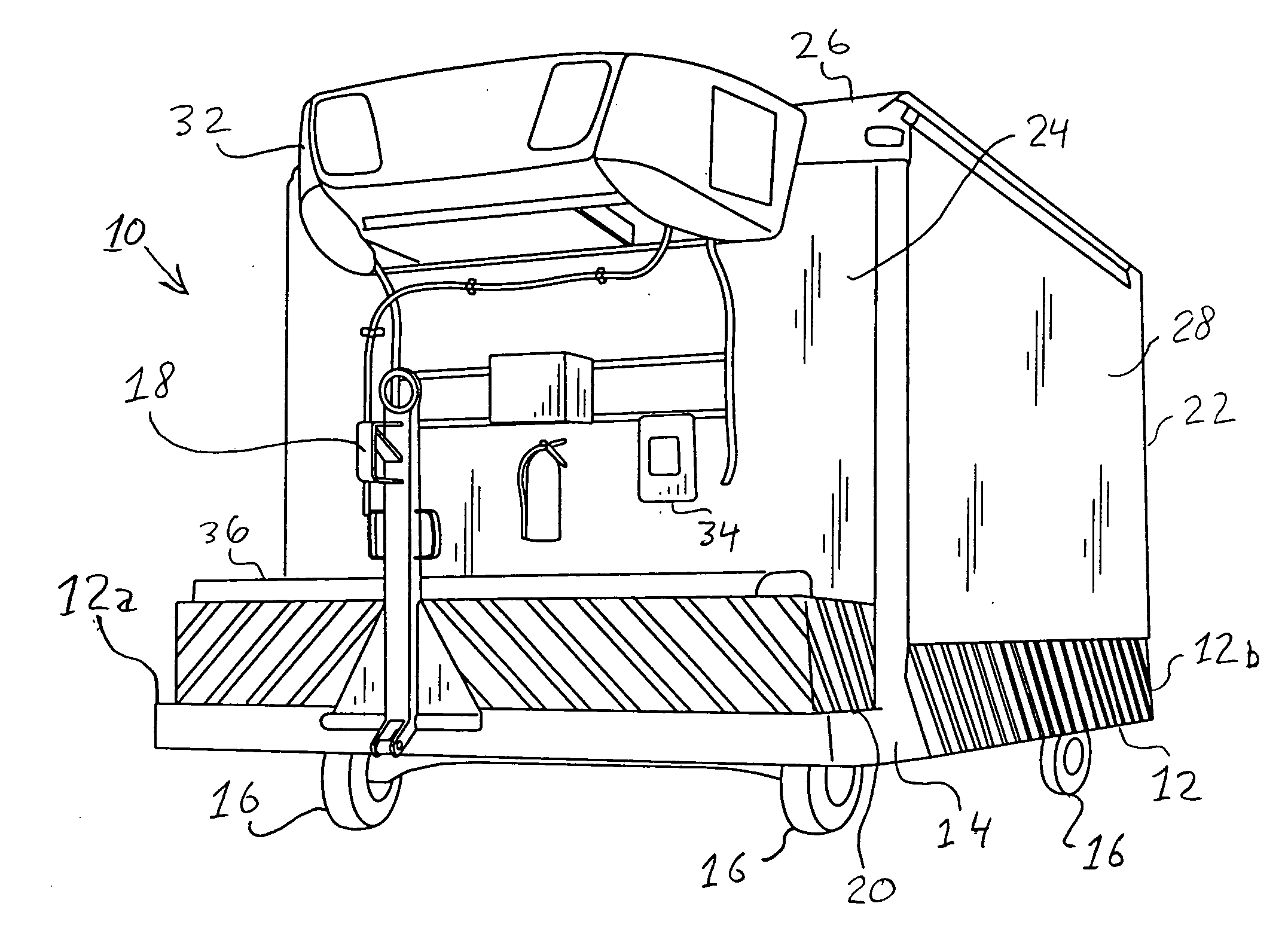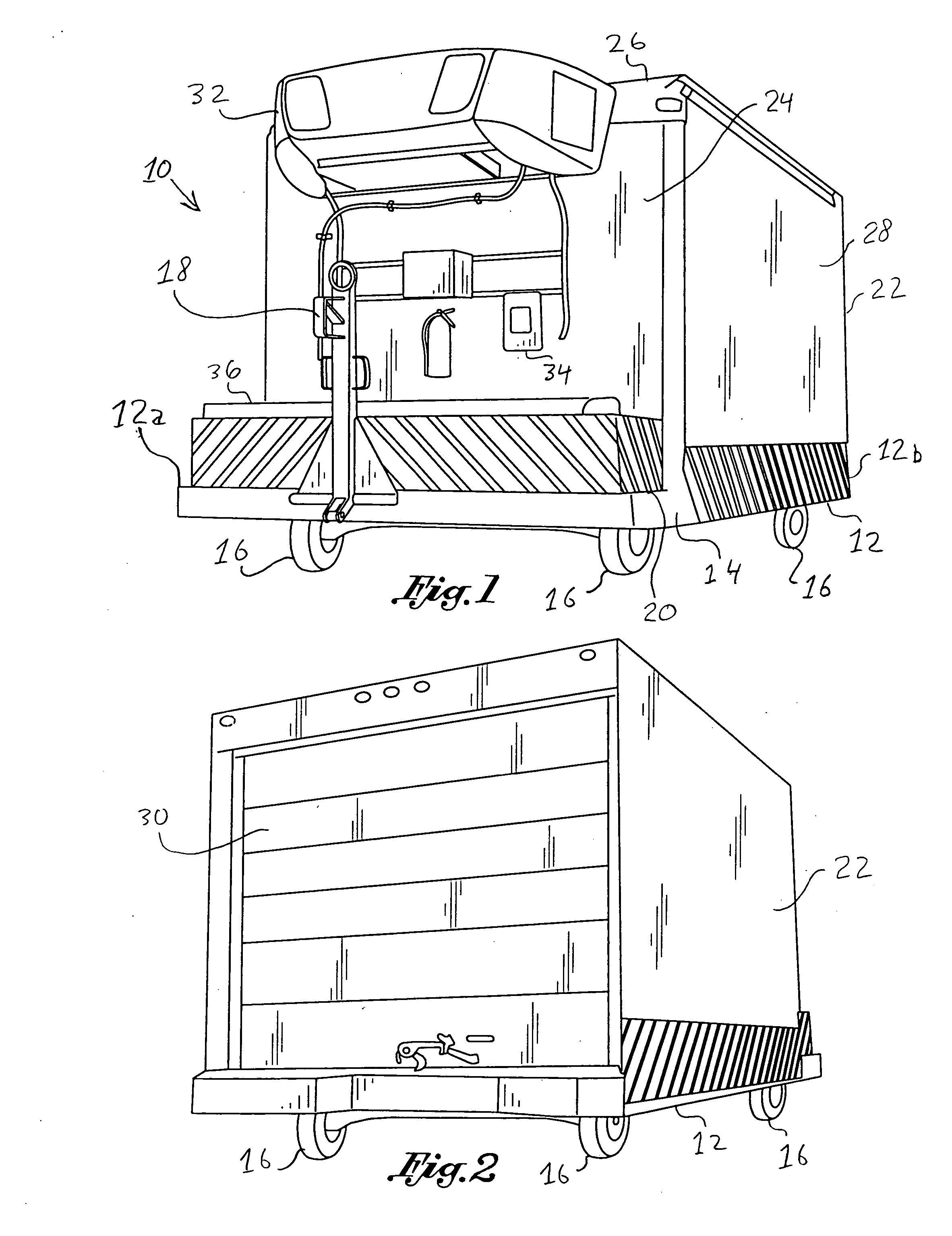In this regard, such perishable cargo, which can encompass any type of product that must be maintained in a temperature-controlled environment, can only be efficiently and timely delivered by aircraft in many parts of the world.
In this latter
scenario, failure to continue providing adequate environmental control will cause the cargo to spoil or otherwise become unusable for its intended purpose.
At such point in the shipping process, however, the perishable cargo is no longer maintained in a temperature-controlled environment.
Such interval makes the perishable cargo especially vulnerable and it is during such time that substantial damage can occur by virtue of being exposed to a non-temperature controlled environment.
In this regard, from the time that the temperature-controlled cargo is delivered to the airport and ultimately loaded on a plane, where the cargo is kept out of direct
sunlight and at least protected to some extent by
air conditioning, presents a
significant risk that often times causes irreparable damage to the cargo resulting in substantial financial losses and property destruction.
These same issues also arise with respect to perishable air cargo being unloaded from aircraft.
As discussed above, such interval from when the perishable cargo is unloaded from the aircraft to the time from when the same is ultimately stored in a temperature-controlled environment places such perishable cargo at substantial risk.
In addition to the foregoing problems associated with the potential spoilage of perishable air cargo resulting from a break in the “cool chain” is the additional
vulnerability that such cargo can be tampered with, damaged, lost or even stolen.
In this regard, many complications can and often do arise with respect to the transport of cargo to and from storage facilities to aircraft that, given the open nature by which perishable cargo is transported, present numerous opportunities where such unfortunate events can occur.
Indeed, the risk for perishable cargo to become lost, damaged or stolen is exceptionally high at major airports that are very large and encounter heavy volumes of air traffic.
In addition or, alternatively, the open nature by which air cargo is typically transported presents an opportunity that the same will go unchecked and thus exposes a
vulnerability that the cargo can be detrimentally manipulated.
While such containers and the like are known in the art, however, the same do not address the very specific need of being able to store and transport perishable cargo from an air cargo storage facility to the aircraft itself.
Such prior art devices, however, clearly lack any structure for use solely as a means for transporting perishable cargo for the very limited distance and duration from when perishable cargo is taken from an airport terminal to an aircraft, and no further.
Such temperature-controlled containers, however, are typically not operative to function as any type of dolly or trailer and are well-known in the art to be extremely difficult to track and retrieve.
The latter aspect is especially difficult insofar as such transportable container mechanisms must be re-shipped to their original location or other specified destination.
Because of the difficulties in the use of such container devices, the same are ill-suited to serve the very limited purpose of preserving the “cool chain” for the very limited distance and duration involving the time perishable cargo is delivered at the airport terminal to the time when the same is actually loaded on an aircraft.
In addition, such conventional containers typically do not provide any sort of means to keep the cargo in a sealed or locked condition while the same is being transported from cargo building to outbound aircraft, and vice versa.
The failure of such conventional air cargo containers to provide means to secure such cargo also poses a risk that the cargo can be lost, stolen or misplaced, as well as presents an opportunity that contaminating agents, and in particular destructive insects known to infect many agricultural products imported into this country, can be released to cause further damage and
contamination.
 Login to View More
Login to View More  Login to View More
Login to View More 


